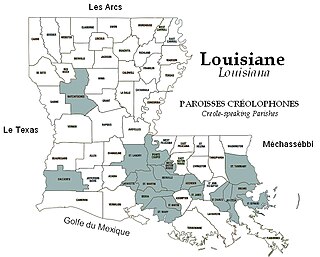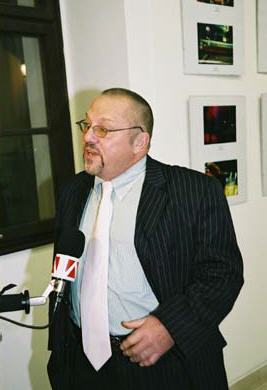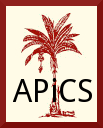A pidgin, or pidgin language, is a grammatically simplified means of communication that develops between two or more groups of people that do not have a language in common: typically, its vocabulary and grammar are limited and often drawn from several languages. It is most commonly employed in situations such as trade, or where both groups speak languages different from the language of the country in which they reside. Linguists do not typically consider pidgins as full or complete languages.

A creole language, or simply creole, is a stable natural language that develops from the process of different languages simplifying and mixing into a new form, and then that form expanding and elaborating into a full-fledged language with native speakers, all within a fairly brief period of time. While the concept is similar to that of a mixed or hybrid language, creoles are often characterized by a tendency to systematize their inherited grammar. Like any language, creoles are characterized by a consistent system of grammar, possess large stable vocabularies, and are acquired by children as their native language. These three features distinguish a creole language from a pidgin. Creolistics, or creology, is the study of creole languages and, as such, is a subfield of linguistics. Someone who engages in this study is called a creolist.

Lingala (Ngala) is a Bantu language spoken in the northwest of the Democratic Republic of the Congo, the northern half of the Republic of the Congo, in their capitals, Kinshasa and Brazzaville, and to a lesser degree in Angola, the Central African Republic and southern South Sudan. Lingala has 25–30 million native speakers and about 35 million second-language speakers, for a total of 60-65 million speakers.
The Adamawa–Ubangi languages are a geographic grouping and formerly postulated family of languages spoken in Nigeria, Chad, the Central African Republic, Cameroon, Gabon, the Republic of the Congo, the Democratic Republic of the Congo and South Sudan, by a total of about 12 million people.
Sango is the primary language spoken in the Central African Republic and also the official language of the country. It is used as a lingua franca across the country and had 450,000 native speakers in 1988. It also has 1.6 million second language speakers.
Derek Bickerton was an English-born linguist and professor at the University of Hawaii in Manoa. Based on his work in creole languages in Guyana and Hawaii, he has proposed that the features of creole languages provide powerful insights into the development of language both by individuals and as a feature of the human species. He is the originator and main proponent of the language bioprogram hypothesis according to which the similarity of creoles is due to their being formed from a prior pidgin by children who all share a universal human innate grammar capacity.

Louisiana Creole is a French-based creole language spoken by fewer than 10,000 people, mostly in the state of Louisiana. Also known as Kouri-Vini, it is spoken today by people who may racially identify as White, Black, mixed, and Native American, as well as Cajun and Creole. It should not be confused with its sister language, Louisiana French, a dialect of the French language. Many Louisiana Creoles do not speak the Louisiana Creole language and may instead use French or English as their everyday languages.

Jamaican Patois is an English-based creole language with West African influences, spoken primarily in Jamaica and among the Jamaican diaspora. A majority of the non-English words in Patois come from the West African Akan language. It is spoken by the majority of Jamaicans as a native language.

Ian Francis Hancock is a linguist, Romani scholar and political advocate. He was born and raised in England and is one of the main contributors in the field of Romani studies.
Berbice Creole Dutch is a now extinct Dutch creole language, once spoken in Berbice, a region along the Berbice River in Guyana. It had a lexicon largely based on Dutch and Eastern Ijo varieties from southern Nigeria. In contrast to the widely known Negerhollands Dutch creole spoken in the Virgin Islands, Berbice Creole Dutch and its relative Skepi Creole Dutch, were more or less unknown to the outside world until Ian Robertson first reported on the two languages in 1975. Dutch linguist Silvia Kouwenberg subsequently investigated the creole language, publishing its grammar in 1994, and numerous other works examining its formation and uses.

Juba Arabic, also known since 2011 as South Sudanese Arabic, is a lingua franca spoken mainly in Equatoria Province in South Sudan, and derives its name from the South Sudanese capital, Juba. It is also spoken among communities of people from South Sudan living in towns in Sudan. The pidgin developed in the 19th century, among descendants of Sudanese soldiers, many of whom were recruited from southern Sudan. Residents of other large towns in South Sudan, notably Malakal and Wau, do not generally speak Juba Arabic, tending towards the use of Arabic closer to Sudanese Arabic, in addition to local languages. Reportedly, it is the most spoken language in South Sudan despite government attempts to discourage its use due to its association with past Arab colonization.

John Russell Rickford is a Guyanese–American academic and author. Rickford is the J. E. Wallace Sterling Professor of Linguistics and the Humanities at Stanford University's Department of Linguistics and the Stanford Graduate School of Education, where he has taught since 1980. His book Spoken Soul: The Story of Black English, which he wrote together with his son, Russell J. Rickford, won the American Book Award in 2000.
A post-creole continuum is a dialect continuum of varieties of a creole language between those most and least similar to the superstrate language. Due to social, political, and economic factors, a creole language can decreolize towards one of the languages from which it is descended, aligning its morphology, phonology, and syntax to the local standard of the dominant language but to different degrees depending on a speaker's status.
Hugo Ernst Mario Schuchardt was an eminent German linguist, best known for his work in the Romance languages, the Basque language, and in mixed languages, including pidgins, creoles, and the Lingua franca of the Mediterranean.

Robert Anderson Hall Jr. was an American linguist and specialist in the Romance languages. He was a professor of Linguistics at Cornell University and the first president of The Wodehouse Society (US).
The Linguistic Bibliography / Bibliographie Linguistique is an annual publication which first appeared in 1949. The publication provides comprehensive bibliographical descriptions of publications in theoretical linguistics, with about 20,000 items added per year. Since 2002, the database has also been available online, as Linguistic Bibliography Online, and contains data from 1993 onward.
Gbeya is a Gbaya language of the Central African Republic. Ethnologue reports it may be mutually intelligible with Bozom.

The Atlas of Pidgin and Creole Language Structures (APiCS) is a comparative linguistic atlas of contact languages. It exists as a four volume publication and online database in the form of a website APiCS Online.
Marlyse Baptista is a linguist specializing in morphology, syntax, pidgin and creole languages, language contact, and language documentation. She is currently Uriel Weinreich Collegiate Professor of Linguistics at the University of Michigan.
Samuel Gyasi Obeng is a Distinguished Professor of Linguistics at Indiana University Bloomington since 2006 and Editor-in-Chief of Africa Today. He is the founding editor of Issues in Political Discourse Analysis and Issues in Intercultural Communication and a Distinguished Honorary Member of the African Language Research Project at the University of Maryland Eastern Shore. Obeng obtained his Master of Arts degree in Linguistics from the University of Ghana in 1981, and his Doctor of Philosophy degree of Language and Linguistic Science from the University of York, England, in 1988. He was a Senior lecturer at Ghana University, Legon, Accra (1987-1994) and Assistant professor at Indiana University, Bloomington since 1994. Obeng's research interests include political, juridical and therapeutic discourse analysis, African onomasiology, pidgin and Creole languages, conversational phonetics, language description and language documentation.








